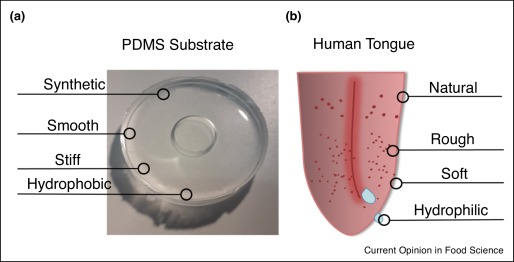I am currently working as a Postgraduate Researcher at the University of Leeds, where I am actively involved in research activities. Prior to this, I successfully completed my master's degree through the renowned Erasmus Mundus joint program, specializing in Tribology and Bachelor's degree in Mechanical Engineering from VTU in Belgaum, India. Further I handle the social media pages for Tribonet and I have my youtube channel Tribo Geek.
Insights into Soft tribology
Table of Contents
Introduction
Soft tribological contacts are widespread in our daily lives, from vehicle tires on roads to interactions within the human body, such as bone-cartilage and eye-eyelid contacts. These soft contacts play a vital role in sensory perception and decision-making processes, making soft tribology highly relevant to the consumer industry. Whether involving complex fluids like food or skin cream, the dynamic response of these confined fluids affects friction forces, heat transfer, and mass transfer, influencing sensory perceptions and the delivery of active substances to surfaces. To accurately represent soft contacts with biosurfaces, model surfaces must be compliant, have suitable surface roughness, and the right surface chemistry. However, these parameters vary among individuals and biosurfaces. Therefore, this paper focuses on using model lubricants within model soft contacts, allowing systematic modifications to understand lubrication principles in soft contacts better. In soft contacts with compliant substrates, pressure-induced viscosity changes in the lubricant are minimal, placing them in the iso-viscous elastohydrodynamic lubrication regime [1].

Figure-1 Comparison between an (a) untreated PDMS surface and (b) the human tongue. Note that PDMS characteristics can be altered with specific treatments [2]
Importance of soft tribology
Traditional tribology primarily focuses on hard surfaces and Newtonian lubricants, commonly applied in machine engines, rotating instruments, and mechanical systems like rolling ball bearings, oil lubricated systems, and gears. Recent advances in materials science have introduced soft, deformable materials, such as elastomers, hydrogels, and natural cartilage, into engineering applications. Investigating the frictional properties of these materials is essential for developing medical equipment like contact lenses, pacemakers, and artificial organs. Food scientists also find interest in these soft materials as they mimic the soft and wet nature of the oral cavity. Hydrogels, a category of soft surfaces, often exhibit low friction coefficients due to loose hydrophilic polymer chains creating a hydrated polymer layer by trapping water. However, these coefficients can be influenced by parameters like surface roughness, material stiffness, and adhesive properties, resulting from attractive forces between surfaces and interlocking surface asperities. These complex interactions make measuring, analyzing, and understanding the frictional properties of soft systems challenging, often leading to poor reproducibility [2].

Figure-2 Soft oral tribology [3]
Challenges in Soft tribology
Challenges persist in the field of soft solid tribology despite extensive research efforts. The accurate measurement of friction on soft, rough, and lubricated solids and its correlation with in-vivo experiments remains a complex task. Tribological measurements are highly sensitive to various material and measurement parameters, making it challenging to directly link measured frictional data to the sensory attributes perceived by human subjects in sensory studies. This sensitivity sometimes results in tribometers detecting differences between samples that sensory panel participants do not perceive as distinct. Nevertheless, some researchers have made notable progress and managed to establish agreements between friction measurements and sensory perception, driving the growing interest in soft solid tribology within the field of food science.
To conduct meaningful mouth-mimicking experiments, several critical factors must be considered. Oral tribometers should be affordable, versatile, and capable of reliably handling complex food samples. When employing tribometers with soft synthetic surfaces to simulate biological processes, factors such as surface roughness, stiffness, and hydrophobicity become crucial considerations. It’s important to acknowledge that results are system-dependent, not solely dependent on the type of food being studied. Ideally, the stiffness and roughness of the material used should closely match those of the human tongue and palate. Comprehensive molecular-level surface and lubricant characterization are necessary to gain insights into non-Stribeck behavior. Additionally, tribological research in food science could benefit from methods that allow for various sliding movements, as food experiences multidirectional movements in the mouth. As the field of food tribology continues to evolve, the development of more realistic measurement systems is expected, providing improved understanding of tribology concerning oral processing and sensory perception. The customization of tribological experiments is likely to be a key direction for future tribological research in this context.
Reference


Be the first to comment